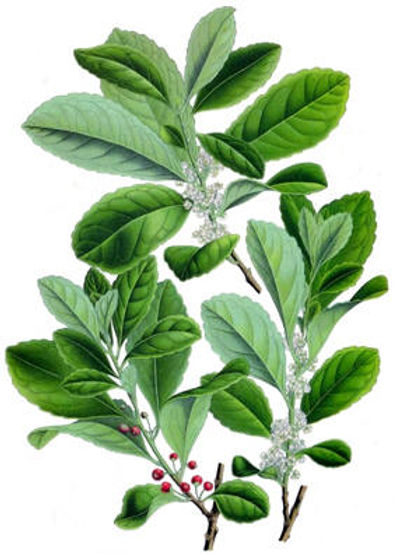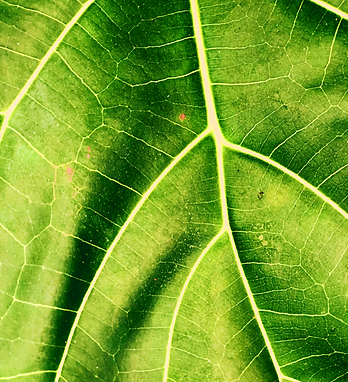INITIAL STATISTICAL DATA


YERBA
Scientific name: Ilex Paraguariensis
Common Name: Yerba Mate
Origins: Selva Paranense, the forest at the sides of Rìo Paranà.
Heighth: 12-16 meters in wildness, 3 meters in fields
Age: Up to 100 years
Reign: Vegetals
Division: Angiospermas
Class: Dicotiledoneas
Order: Sapindales
Family: Aquifoliacee
Genre: Ilex
Species: Paraguariensis
Producer Regions: Misiones y Corrientes
Grounded Leaf Value: $31,90/kilogram
Green Leaf Value: $8,40/kilogram
The production of yerba is extremely specific: it grows in the Selva Paraguaniense, which touches Brazil, Argentina and Paraguay, and follows the natural flow of the Paranà river. Argentina dedicates a whole 194.000 hectares of soil to the cultivation of yerba, followed by Brazil and Paraguay.
One of the main reasons yerba didn’t reach the global market yet is to be found in the absence of major industries and pre-determined dates, which would allow for a better distribution and control of the product. Even though there are many different labels of yerba and varieties of it, the main percentage of the production is made by privates which then sell the processed product to the big packaging companies.
Nonetheless, during the last twenty years it has been observed that the habits in consumption of yerba have changed, in that more than a 20% of the sold product is not regular yerba anymore, but flavored or composed ones*.
The consumption of yerba pro capite is around 2,6 kilograms per year, way below the blasting 7 kilograms that are consumed in Argentina.
One major yerba importer is United States of America (40% of Paraguay’s total production, 56% of Argentina’s total production*), which is as well the country with most commercial agreements regarding mate, leading to the exportation of it worldwide in small amounts, whereas the internal consumption is the main reason of importation.
The main exporter of yerba outside the American continent is, surprisingly, Syria ( 44% of the total production of all producers)*: apparently Syrians got in to experience mate drinking a century ago, due to immigration and liked it so much that they inglobated it into their own culture. It is very common for people who live in warm countries to be keen to drinking teas or infusions (It strengthens their heat resistance while lowering their own body temperature. Furthermore, it avoids thermic shocks, that might occur when ingesting cold drinks in warm environments). The yerba exported to Syria is only treated to be essiccated leaves, ad leaves only: the percentage of dust and branches is minimum or inexistent, since they prefer a tea-infusion version of mate. In South America mate is not a tea whatsoever, but a warm drink and is supposed to contain the dust, which allows the brew to last longer and stay dry while not used. Furthermore, it preserves the taste and quality of the product. The more dust there is in a yerba package, the stronger the mate will be in taste.
Yerba mate is traditionally essiccated and formulated by four main elements: hoja impalpable, hoja fina, hoja gruesa and palo*. Each and every single one of these elements plays an important role in the culture of mate preparing and consuming, creating a specific flavor, texture, and quality of mate. Changing any if these elements might cause a change in the process of preparation, the name and quality of it and the meaning of drinking it as well. If you only used the thick leaves it would be tea; just the dust would make a juice of it; if you take out the branch the flavor fades quicker and it loses in experience quality.
The production of yerba is extremely specific: it grows in the Selva Paraguaniense, which touches Brazil, Argentina and Paraguay, and follows the natural flow of the Paranà river. Argentina dedicates a whole 194.000 hectares of soil to the cultivation of yerba, followed by Brazil and Paraguay.
One of the main reasons yerba didn’t reach the global market yet is to be found in the absence of major industries and pre-determined dates, which would allow for a better distribution and control of the product. Even though there are many different labels of yerba and varieties of it, the main percentage of the production is made by privates which then sell the processed product to the big packaging companies.
Nonetheless, during the last twenty years it has been observed that the habits in consumption of yerba have changed, in that more than a 20% of the sold product is not regular yerba anymore, but flavored or composed ones*.
The consumption of yerba pro capite is around 2,6 kilograms per year, way below the blasting 7 kilograms that are consumed in Argentina.
One major yerba importer is United States of America (40% of Paraguay’s total production, 56% of Argentina’s total production*), which is as well the country with most commercial agreements regarding mate, leading to the exportation of it worldwide in small amounts, whereas the internal consumption is the main reason of importation.
The main exporter of yerba outside the American continent is, surprisingly, Syria ( 44% of the total production of all producers)*: apparently Syrians got in to experience mate drinking a century ago, due to immigration and liked it so much that they inglobated it into their own culture. It is very common for people who live in warm countries to be keen to drinking teas or infusions (It strengthens their heat resistance while lowering their own body temperature. Furthermore, it avoids thermic shocks, that might occur when ingesting cold drinks in warm environments). The yerba exported to Syria is only treated to be essiccated leaves, ad leaves only: the percentage of dust and branches is minimum or inexistent, since they prefer a tea-infusion version of mate. In South America mate is not a tea whatsoever, but a warm drink and is supposed to contain the dust, which allows the brew to last longer and stay dry while not used. Furthermore, it preserves the taste and quality of the product. The more dust there is in a yerba package, the stronger the mate will be in taste.
Yerba mate is traditionally essiccated and formulated by four main elements: hoja impalpable, hoja fina, hoja gruesa and palo*. Each and every single one of these elements plays an important role in the culture of mate preparing and consuming, creating a specific flavor, texture, and quality of mate. Changing any if these elements might cause a change in the process of preparation, the name and quality of it and the meaning of drinking it as well. If you only used the thick leaves it would be tea; just the dust would make a juice of it; if you take out the branch the flavor fades quicker and it loses in experience quality.
YERBA COMPOSITION
The plant of yerba mate is composed by its steam (which has nowood since it is a bushy plant), leaves, flowers and fruits. The leaves are bright green and when fully grown they turn dark green. They grow up to be as big as a palm or two, and are the most used part of the plant. The other parts of it are irrelevant to the extensive cutilvation. The flowers, big as finger tips, have the sole purpose of producing the fruits, which are small and round, composed by an internal pulp that surrounds the two seeds that form the main two emispheres of it. They are brignt red while the flowers are white and only composed by four to five petals and the internal pistilla.
These berries are edible, but very bitter, which causes for them to be discarted, even though they have a high percentage of vitamins and minerals, that would be very useful and healthy to consume.
The C.A.A., Còdigo Alimentario Argentino, or Argentinian Food Code, establishes that the composition of commercial yerba mate must be (branches included) at least 65% leaves and no more than 35% of branch. There is not a limit to the amount of mate you can consume daily, even though it is recommendable not to consume it before sleeping because it will make it harder to fall asleep.


The production of yerba mate is strictly policed by the respective governments and by the importing governments as well: in order to be sold it must be aproved by S.E.N.A.S.A. through a series of four tests. This testing phase includes O.I.A., Argencert,Food Safety, Letis S.A. .
It is a sustainable production system, that openly advocates for environmental care, through the enforcement of the biodiversity and the biotic activity of the ground.
There is the slightest possible of external props at the base of this eco-friendly system: no pesticydes, no synthetic poisons, no genetic manipulation of the product and the less possible, air, earth or water polluting.
The European Commission actually aproved the regulamentations of production dictated by the I.N.Y.M..
The people working omn yerba mate fields are called teraferos. Their main job is cutting down the branche s and leaves, that are then transported to the essicating facilities. Here, the workers are just calles operarios, and they are in charge of the essication process. Unfortunately, even though the production of yerba is strictly regulated, the workers’ rights are not: in fact one of the darkest sides of working in the yerba industry is facing the employment of underwaged and underaged workers. Many laws are being forwarded for the abolition of this, and many labels are starting to stamp their products as cruelty-free when respecting this statement.

